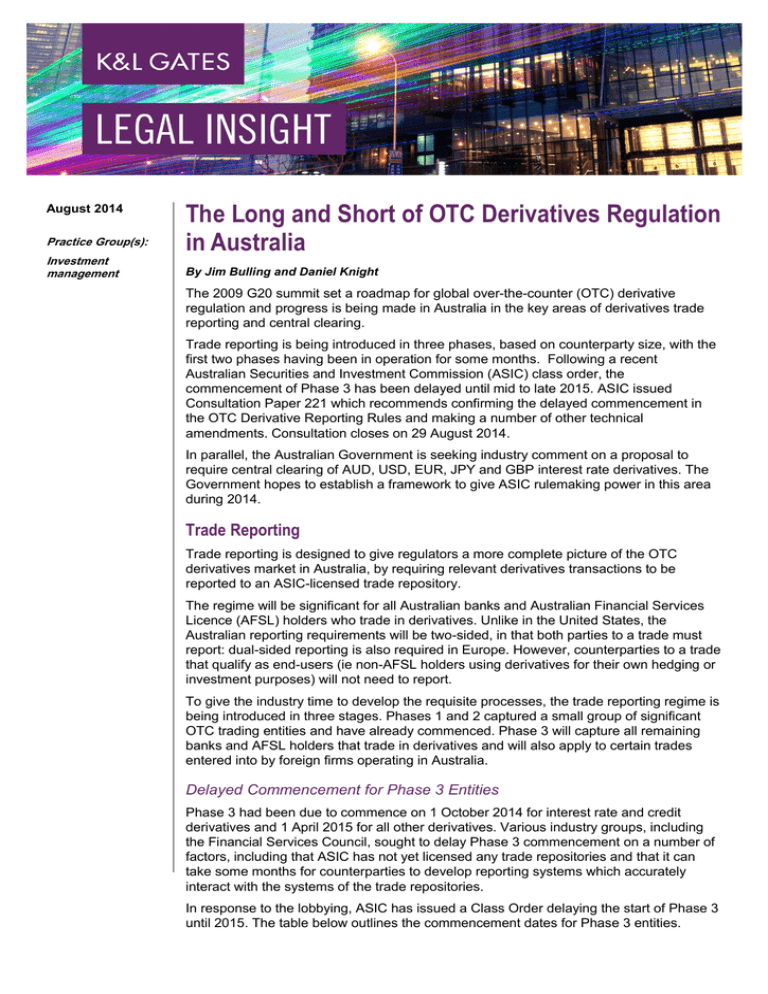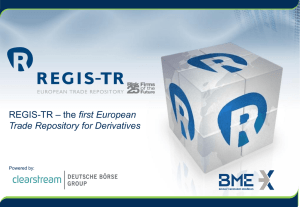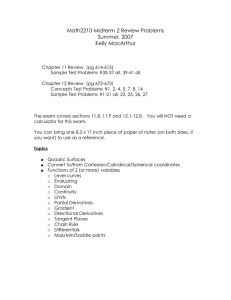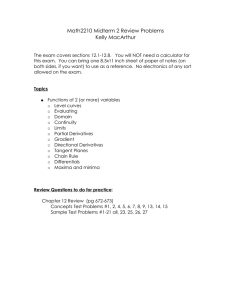
August 2014
Practice Group(s):
Investment
management
The Long and Short of OTC Derivatives Regulation
in Australia
By Jim Bulling and Daniel Knight
The 2009 G20 summit set a roadmap for global over-the-counter (OTC) derivative
regulation and progress is being made in Australia in the key areas of derivatives trade
reporting and central clearing.
Trade reporting is being introduced in three phases, based on counterparty size, with the
first two phases having been in operation for some months. Following a recent
Australian Securities and Investment Commission (ASIC) class order, the
commencement of Phase 3 has been delayed until mid to late 2015. ASIC issued
Consultation Paper 221 which recommends confirming the delayed commencement in
the OTC Derivative Reporting Rules and making a number of other technical
amendments. Consultation closes on 29 August 2014.
In parallel, the Australian Government is seeking industry comment on a proposal to
require central clearing of AUD, USD, EUR, JPY and GBP interest rate derivatives. The
Government hopes to establish a framework to give ASIC rulemaking power in this area
during 2014.
Trade Reporting
Trade reporting is designed to give regulators a more complete picture of the OTC
derivatives market in Australia, by requiring relevant derivatives transactions to be
reported to an ASIC-licensed trade repository.
The regime will be significant for all Australian banks and Australian Financial Services
Licence (AFSL) holders who trade in derivatives. Unlike in the United States, the
Australian reporting requirements will be two-sided, in that both parties to a trade must
report: dual-sided reporting is also required in Europe. However, counterparties to a trade
that qualify as end-users (ie non-AFSL holders using derivatives for their own hedging or
investment purposes) will not need to report.
To give the industry time to develop the requisite processes, the trade reporting regime is
being introduced in three stages. Phases 1 and 2 captured a small group of significant
OTC trading entities and have already commenced. Phase 3 will capture all remaining
banks and AFSL holders that trade in derivatives and will also apply to certain trades
entered into by foreign firms operating in Australia.
Delayed Commencement for Phase 3 Entities
Phase 3 had been due to commence on 1 October 2014 for interest rate and credit
derivatives and 1 April 2015 for all other derivatives. Various industry groups, including
the Financial Services Council, sought to delay Phase 3 commencement on a number of
factors, including that ASIC has not yet licensed any trade repositories and that it can
take some months for counterparties to develop reporting systems which accurately
interact with the systems of the trade repositories.
In response to the lobbying, ASIC has issued a Class Order delaying the start of Phase 3
until 2015. The table below outlines the commencement dates for Phase 3 entities.
The long and short of OTC derivative regulation in Australia
Type of OTC
derivative
Phase '3A' entities - AUD5bn
or more of total gross
notional outstanding OTC
positions
Phase '3B' entities – less than
AUD5bn of total gross notional
outstanding OTC positions
Interest rate and
credit derivatives
7 calendar months after a trade
repository is licensed by ASIC,
but not before 13 April 2015.
12 October 2015 or 13 calendar
months after a trade repository is
licensed by ASIC – whichever is
earlier.
Other derivatives
12 October 2015 or 13 calendar months after a trade repository is
licensed by ASIC – whichever is earlier.
If ASIC does not license a trade repository before 12 October 2015, Phase 3 entities will
need to engage with an ASIC approved (but not necessarily licensed) foreign trade
repository and report trades to it, tagging the trades as relating to Australia. ASIC hopes
to license a trade repository in 2014 to avoid this situation.
ASIC Consultation Paper 221 proposed to confirm the delayed commencement. It also
proposes a number of technical amendments which will somewhat lessen the compliance
burden, including by clarifying how reporting entities can delegate their reporting
obligations. Consultation closes on 29 August 2014.
Despite the extended deadlines, Phase 3 reporting entities should progress discussions
with a trade repository as soon as possible, to ensure appropriate reporting systems will
be in place for the start of reporting obligations.
Central Clearing
Moves towards central clearing of OTC derivatives transactions are in their infancy in
Australia. The Australian Government's Treasury Department issued proposal papers in
February and July this year seeking comment on its proposal to require central clearing
for interest rate derivatives denominated in AUD, USD, EUR, GBP and JPY. It is not
currently proposed that central clearing be required for North American and European
credit derivatives, however this may be revisited as the proposal develops.
Central clearing would involve OTC derivatives being cleared through a licensed central
clearing counterparty, such that the central clearing counterparty would take
responsibility for both party's obligations to each other. Central clearing counterparties
may impose margin requirements on both parties before accepting a trade for clearing.
With appropriate risk management and margin and capital requirements at the central
clearing counterparty level, this regime could significantly reduce counterparty risks
associated with OTC derivative trades.
The central clearing regime is proposed to apply only to large financial institutions. How
this category will be defined is still a matter of discussion. The current intention is that the
regime would capture Australian entities with AUD100 billion or more of total gross
notional outstanding OTC derivatives positions. Treasury has invited further consultation
on this issue.
Submissions to Treasury close on 1 August 2014. Following this consultation, the first
step will be for ASIC to be given rule-making powers to develop a central clearing
regime, as occurred with the trade reporting regime. This is intended to occur during
2014. ASIC is then likely to conduct further consultation to flesh out the details of the
regime.
2
The long and short of OTC derivative regulation in Australia
Firms wishing to have input into the discussion should contribute to the Treasury
consultation and monitor future developments at ASIC.
This article first appeared in the Financial Services Newsletter Vol 13 (5-6), published by
LexisNexis.
Authors:
Jim Bulling
jim.bulling@klgates.com
+61.3.9640.4338
Daniel Knight
daniel.knight@klgates.com
+61.3.9640.4324
Anchorage Austin Beijing Berlin Boston Brisbane Brussels Charleston Charlotte Chicago Dallas Doha Dubai Fort Worth Frankfurt
Harrisburg Hong Kong Houston London Los Angeles Melbourne Miami Milan Moscow Newark New York Orange County Palo Alto
Paris Perth Pittsburgh Portland Raleigh Research Triangle Park San Diego San Francisco São Paulo Seattle Seoul Shanghai
Singapore Spokane Sydney Taipei Tokyo Warsaw Washington, D.C. Wilmington
K&L Gates comprises more than 2,000 lawyers globally who practice in fully integrated offices located on five
continents. The firm represents leading multinational corporations, growth and middle-market companies,
capital markets participants and entrepreneurs in every major industry group as well as public sector entities,
educational institutions, philanthropic organizations and individuals. For more information about K&L Gates or
its locations, practices and registrations, visit www.klgates.com.
This publication is for informational purposes and does not contain or convey legal advice. The information herein should not be used or relied upon
in regard to any particular facts or circumstances without first consulting a lawyer.
© 2014 K&L Gates LLP. All Rights Reserved.
3





